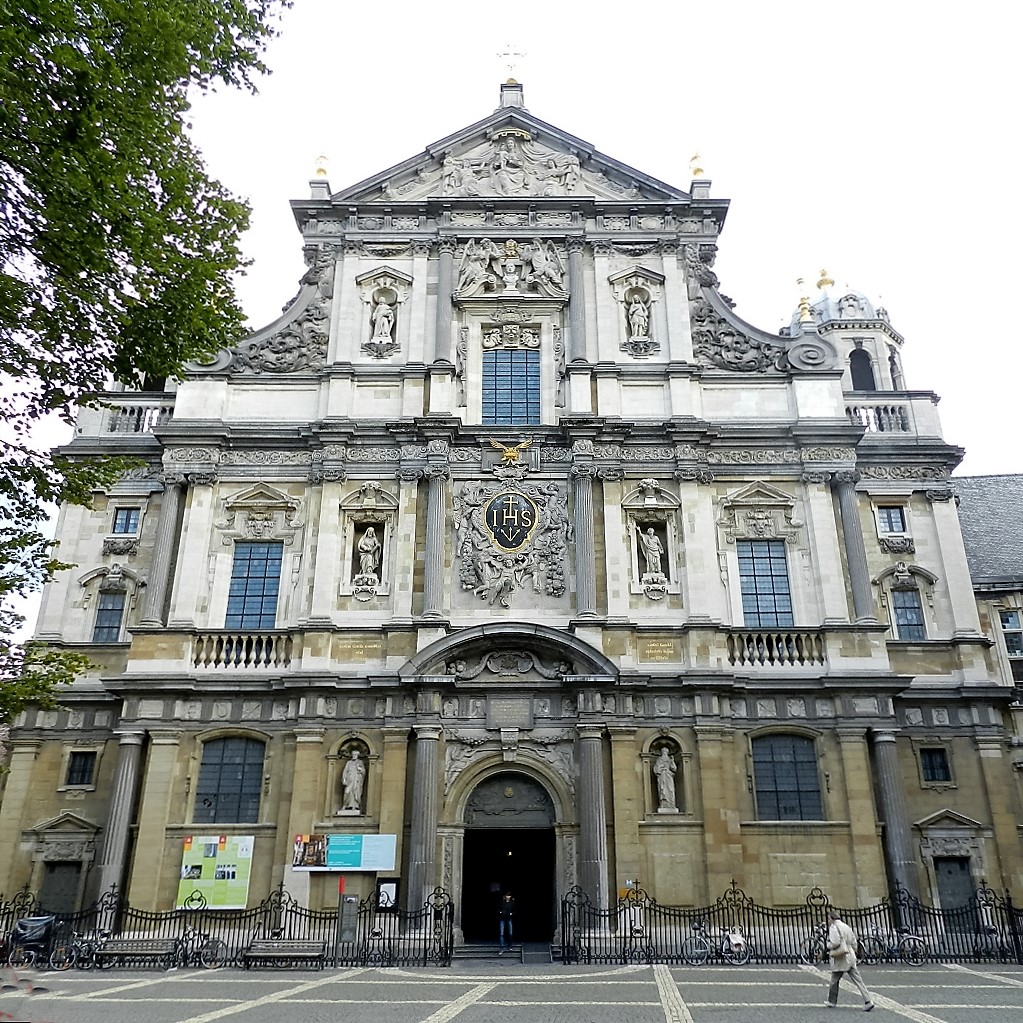The Antwerp jesuit church, a revelation.
The chapel of Saint Francis Xavier
In the northern aisleLengthwise the nave [in exceptional cases also the transept] of the church is divided into aisles. An aisle is the space between two series of pillars or between a series of pillars and the outer wall. Each aisle is divided into bays., the 1720 wainscoting with a cycle of 20 passages from the life of SaintThis is a title that the Church bestows on a deceased person who has lived a particularly righteous and faithful life. In the Roman Catholic and Orthodox Church, saints may be venerated (not worshipped). Several saints are also martyrs. Francis Xavier ends in an apseSemi-circular or polygonal extension where the high altar is located in a church. with the altarThe altar is the central piece of furniture used in the Eucharist. Originally, an altar used to be a sacrificial table. This fits in with the theological view that Jesus sacrificed himself, through his death on the cross, to redeem mankind, as symbolically depicted in the painting “The Adoration of the Lamb” by the Van Eyck brothers. In modern times the altar is often described as “the table of the Lord”. Here the altar refers to the table at which Jesus and his disciples were seated at the institution of the Eucharist during the Last Supper. Just as Jesus and his disciples did then, the priest and the faithful gather around this table with bread and wine. that was devoted to him (1621). Here too the emphasis is on the miraculous aspects, even though the ‘apostleThis is the name given to the principal twelve disciples of Jesus, who were sent by Him to preach the gospel. By extension, the term is also used for other preachers, such as the Apostle Paul and Father Damien (“The Apostle of the Lepers”). of India’ – as he is called in the arch above the apse – is strongly typified as an enterprising, vigorous and heroic proclaimer of faith. The most important attribute of this missionary is the crucifix he is holding up as a sign of his preaching. Anyway, as a youngster Francis already had an ardent devotion for the crucified Christ. Xavier can mostly be recognized from the white surpliceA long-sleeved, half-length white robe worn over a cassock. Rochet is a synonym. and the stoleA long strip of cloth worn around the neck by the priest, the two ends of which are of equal length at the front. The stole is worn during mass and the administration of the other sacraments. above the black Jesuit cassockA long, usually black, garment that reaches down to the feet and is closed at the front from bottom to top with small buttons. Synonym: soutane.: i.e. the liturgical garments to baptize (converts).
The ‘apostle of India’ mainly worked in Goa, where he founded a college, and at the South coast with the poor and the oppressed. He went a lot about with children and in this way tried to reach also the older ones for Jesus’ message. After having crossed several islands of the Indonesian archipelago, he attempted to establish closer contact with rulers and scientists in his beloved Japan. Finally, they pointed at the land of culture, China. On his way there, the great missionary died on the desert island Sancian in 1552. The day of his death, 3rd December, now is his feast-day. His body lies in Goa.
This missionary, who once and for all had left his family, friends and culture, at a time when one could not fly to and from by plane, left an impressive correspondence. This stimulated many young idealists to become a Jesuit missionary. In his trail, a great deal of Flemings (‘Flamencos’) went to the Far East. One of them was Ferdinand Verbiest, who was appointed chief astronomer and builder of the imperial observatory in Peking (1688). Therefore, the foundation at the Catholic University of Louvain promoting the relationship with China, bears his name.
From Antwerp, these missions to the Far East were provided with religious works of art and especially with thousands of pictures (engravings). The artistic influence was mutual; this is testified by for instance the Chinese liturgical textile in the sacristyThe room where the priest(s), the prayer leader(s) and the altar server(s) and/or acolyte(s) prepare and change clothes for Mass..

